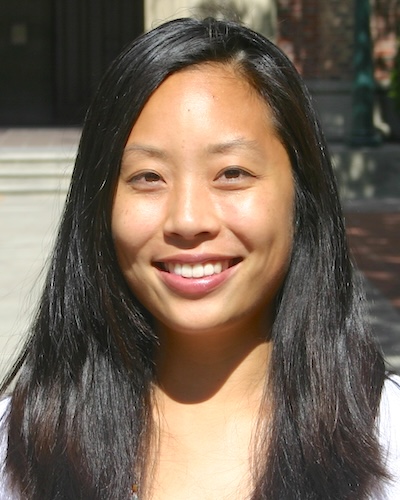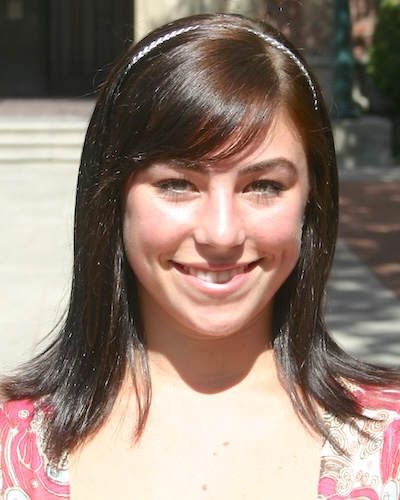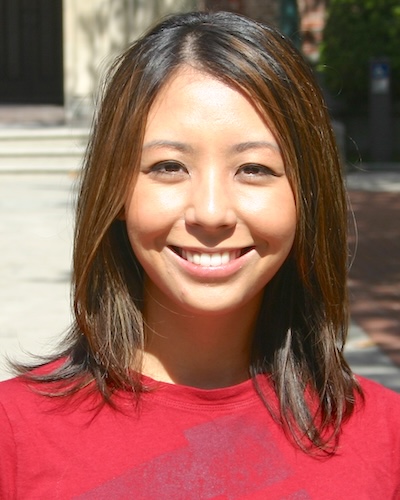Student Blog

Just a minute to listen . . . ⟩
January 25, 2011, by Yao
Sometimes the best therapy is to have someone listen to you.
I’ve always appreciated when friends took the time to listen to me but I was lucky enough this past Friday to really observe this in practice during my OT 500 University Hospital observation elective. It’s hard sometimes to remember that although our goal as occupational therapists in the hospital is to return the patients to functional ability in ADLs and make sure that they are equipped with the best tools to help them engage fully in their life after hospitalization, that sometimes in order to best serve our patients we need to listen to them first.
It was my second day of rotations and the plan was to see about 4-5 patients within the 4 hours that I was observing. I realized how hard it was to balance what the patient needed physically and what the patient might need mentally as well as the need to be flexible. The latter is a definite requirement in Occupational Therapy and even more pertinent when working in a hospital setting. The first two patients had gone according to schedule and the OT I was shadowing was able to balance rapport building and physical engagement in the session. Then it was time for our third patient. It was the first time this particular patient was in a hospital that had health professionals talk to him as a peer. Rather than a “I’m the Medical Professional and you’re the patient and you will listen and do everything that I say without a question” interaction. We started with our typical introductions and a brief summary of our jobs as Occupational Therapists and what role we would play in his recovery. At the beginning of the session he had mentioned that he was suffering from an immense amount of pain and he wasn’t sure what he was able to do and would possibly prefer to engage in bedside exercises. Then, it seemed out of the blue he brought up information that he had heard about upcoming Occupational Therapy research and how he was fascinated by the strides we were making in areas such as Autism. This began a deep conversation about not only Occupational Therapy but every now and again we were able to get a little bit about his background, The background information helped us piece together his occupational history as well as fun interesting facts that we may be able to later incorporate into his therapy sessions.
Then without skipping a beat the therapist I was observing mentioned the possibility of taking a few laps around the floor because it seemed as if he was ready and able to. Without hesitation the patient started getting up out of his bed and continued to conversation. As we were walking and talking about various subjects in the medical field one lap became two and two became three and finally we had to migrate back to his room in order for him to get to his lunch tray in time. While we were wrapping up the patient said “Thanks, I needed that.”
The time spent with him allowed us to help put him at ease with his hospital visits by reminding him of his knowledge of current medical research but also taught us a lot about him and how he was perceiving this hospitalization. It especially gave us insight on how to best tailor his occupational therapy sessions so that he would get the most out of them with his particular goals in mind. I know it seems simple but sometimes I feel that people get so caught up that the importance of just listening is no longer a priority due to the increasing demands of time and billing placed on all medical professionals.
⋯

Undecided and Excited! ⟩
January 23, 2011, by Austen
Beginnings and Endings What are OS/OT?
Here we are entering the third week of our last semester, and let me tell you, time has flown by! The end is in sight and the real world is fast approaching. That means the search for jobs is about to start. Everyday I ask myself what am I going to do? Where do I want to work? Where do I want to live? Usually, I would have answers to these questions, a plan for the next step. However, in this situation I do not.
All throughout college the unknown was scary to me. I needed a goal to work towards, a direction. I always had something to work towards, a major, a career in mind, etc. That is part of why I chose to pursue an occupational therapy degree. It was an end goal, a direct path, and a specific degree for a wonderful career I knew I would enjoy. I also thought I knew exactly what I wanted to do within OT: I wanted to work with kids. However, over these past 2 years, I have realized I am not so sure about that anymore. I am not sure what I want to do or what is coming next. That would typically make me very uneasy, being a Type A personality. Much to my surprise, I am not worried at all.
Perhaps part of my comfort with the unknown is knowing that occupational therapy provides lots of opportunities. Anywhere I move, there will be jobs. Any area I choose to pursue, there will be jobs. That is part of the beauty of OT! Also, if I take a job in an area I end up not enjoying, I can always switch to a new practice area and try something new. The challenge is going to be choosing where to start, what to try first. But the thought of not knowing where that is going to be is exciting to me. I get to enter a new adventure of my life, one that is finally unplanned. All of my life I have planned the future, the next step, and I am ready to be spontaneous for once and see where I end up. Luckily I know that wherever I end up in OT, I will be happy!
⋯

Second Week of the Spring Semester ⟩
January 18, 2011, by Carissa
Back to the second week of school for the last semester of the Master’s program! This semester I am taking 2 research courses, courses on Lifestyle Redesign, ergonomics, and motivational interviewing. This should be a good combination of skills that I really hope to put to good use in my future work. So far so good. I am pretty excited for the Lifestyle Redesign course, as we’ll get to help each other to form more healthy habits and routines. Last week, we were paired up in class, and we performed initial interviews on each other. In this class we’ll be able to help each other reach our goals we have made for our lives over the course of the semester. How fun is that? It will definitely be interesting! I have decided that I really need to work on organizing my time so I do not always end up procrastinating. I have a poor habit of worrying about a deadline coming up, not being able to fully enjoy everything else I’m doing because the deadline is in the back of my mind, but still waiting until almost the last minute to get things done. I am generally efficient during those last few hours before it is due, but I am sure there is a better way to go about doing things. I definitely could use a bit more balance in my life. Luckily, we are told that it is never too late to change those bad habits. We’ll see how it goes!
⋯

5 more months . . . ⟩
January 13, 2011, by Yao
My last Spring semester, I can’t believe it but I’m looking forward to my courses!
It’s the start of our last semester — I never thought that this time would actually come; I knew that it was coming but it was the ever-elusive last step until I enter the real world. Well it’s here. And oddly enough it promises to be one of my most diverse semesters and for once my choice of electives outweigh the number of core classes that I’ll be taking.
The first of my electives is “Sensory Integration,” which was introduced to me while volunteering at a local occupational therapy clinic whose main treatment revolved around sensory integration. After seeing how it positively affected the children were engaging in treatment at the clinic sparked my interest. Ever since my first pediatrics class I’ve been fascinated by the fact that your senses can be used as processors and organizers of information from the environment. As a result some people may have issues using their senses to organize their environment and as a result may react negatively to their environment. This is going to be a very interesting and intense course in addition to being a typical class it also counts as one of four parts of a SIPT al certification in sensory integration through USC and WPS for practitioners. One of the things that I’m most excited about regarding this course aside from the material is that both of our teachers actually studied with and knew A. Jean. Ayres (the woman who developed the sensory integration as it is used in occupational therapy, here at USC)!
My second elective is motivational interviewing. Motivational interviewing can be a way of gathering information from potential clients as well as a relationship-building tool. I decided to take this class because not only would it provide another type of training that would best benefit potential patients but also can be used in furthering my OT skill project that a classmate and I will be presenting on in April in Philadelphia. Especially in this day and age it is very important to gather as much information about the person and their lives throughout the process of rehabilitation to ensure the success and relevancy of treatment.
And the third and last elective that I will be taking is a course that is offered at Keck Hospital of USC. It’s another opportunity to gain hands on clinical experience with the hospital population, which is one that I’m highly interested in. And it’ll be the first elective and fieldwork that I’ll be able to wear scrubs! Believe it or not I haven’t worn a pair of scrubs as a part of fieldwork or as part of my elective courses.
It’s so sad that although this semester is going to be full of meaningful classes and plenty of group outings and projects, it will be the last semester that all my classmates and I will be together, in the same place, on similar schedules. Through my experience in graduate school I’ve began to learn the importance of enjoying the moment and not focusing too much on the future because you’ll lose sight of the present. Here’s to an amazingly awesome last Spring semester!
⋯

Endless Opportunities ⟩
January 11, 2011, by Austen
The band was back together again in Portland, Oregon. Over winter break, I went back home to reunite with my parents and my sister who had just returned from a semester in Capetown. It was as if we were never separated, just picked up where we left off as we always do. It is funny how that happens. As usual, my sister and I immediately jumped into the kitchen and started baking. Over the holidays, we went on a baking rampage. Luckily we were not the only ones eating our delicious creations, we baked for rescue missions, parties, friends, neighbors, and of course, our household. But I can honestly say I baked something new at least three times a week, and I looked forward to it each and every time. Some of my favorites and most successful endeavors were homemade granola, healthy(er) oatmeal chocolate peanut butter chip cookies, chocolate pecan toffee bars, german chocolate cake, lemon cupcakes with blueberry jam filling and vanilla frosting, and pumpkin ginger cookies with maple icing. Hungry? The list of baked goods that came out of my oven goes on and on. I guess you could say I love baking.
People tell me I should go to culinary school, become a food critic, or open a bakery, or all three. This all started when I returned from my semester abroad in Madrid with a new deep love of good food. I enjoy everything about it: reading recipes, grocery shopping, Food Network shows, cooking, indulging, and sharing the experience with others. Cooking and baking are now a large part of my life, and something I hope to continue doing. Since I find cooking and baking so enjoyable and meaningful, I would love to somehow incorporate it with my occupational therapy degree. Cooking classes for physically or mentally disabled? Baking as a social activity for developmentally delayed? Cooking classes for the college student? I often wonder if this is possible, but the more and more I talk about it with others, I realize that occupational therapy can be applied to and paired with any area of interest. Occupational therapy’s diverse and broad skill base can even serve as a valuable marketing tool to create a job that may lie outside the traditional medical/clinician role, whether that be related to cooking, nutrition, sports, music, dance, art, and so on. I once thought of occupational therapy as a very specific field, but I find now that occupational therapy can intertwine with many different aspects of life in ways we may not have explored before. On that note, I get more and more excited about all the opportunities awaiting me. So if you have any recommendations or ideas on how I can combine my love of food, cooking, and baking with occupational therapy, I am all ears!
Well, classes have begun and the semester is quickly underway. Here is to the New Year and my last semester. I think it will be a good one, a challenging one, and an exciting one. I look forward to it!
⋯





